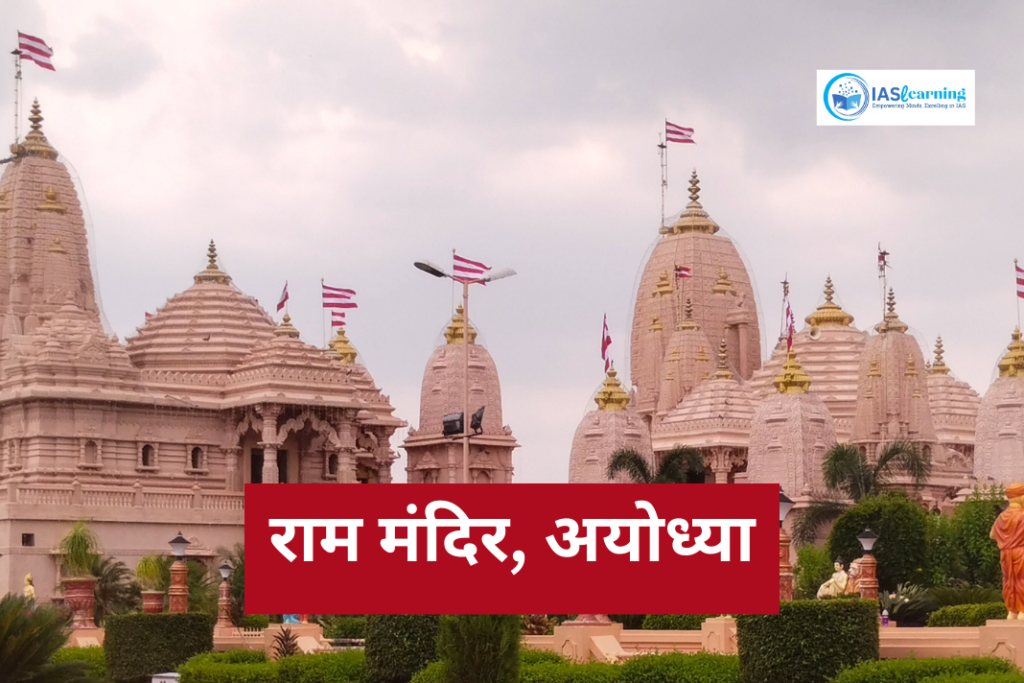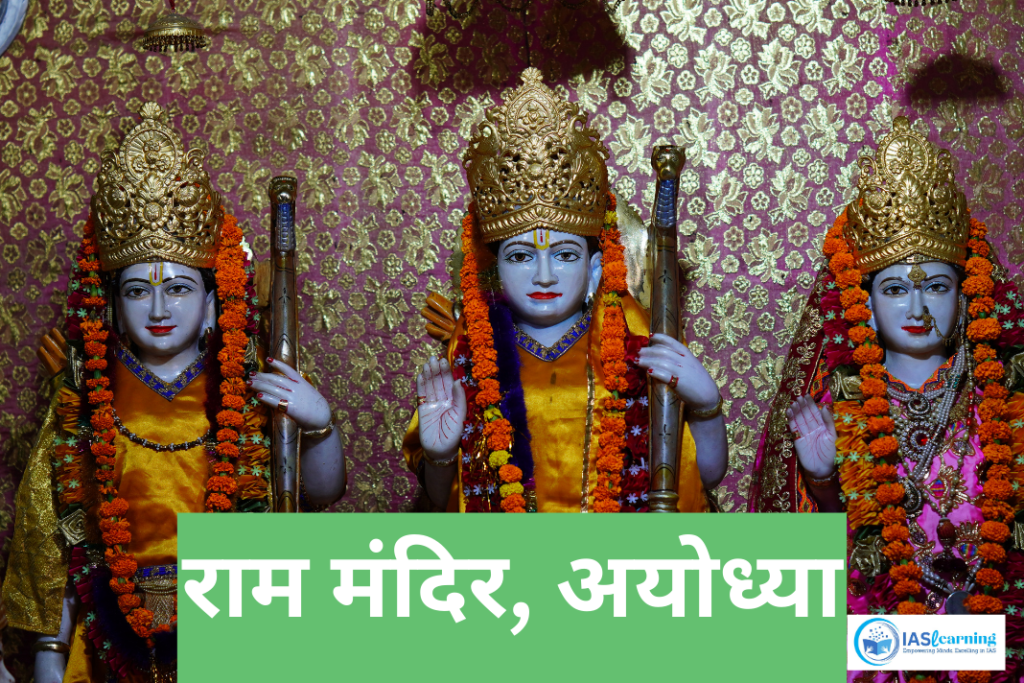Ram Mandir
In Ayodhya, Uttar Pradesh, India, a celestial haven is unfurling as the sacred Ram Mandir takes shape in honor of Rama, a revered deity in Hinduism, and the acknowledged cornerstone of the Ram Janmabhoomi. This sacred ground, once marked by the Babri Masjid, witnessed a transformative moment in 2019 when the Supreme Court of India, in a unanimous decree, bestowed the disputed land to Hindus for the construction of this divine sanctuary. Guided by a compelling report from the Archaeological Survey of India (ASI), which revealed the presence of a non-Islamic structure beneath the ruins of the Babri mosque, the court paved the way for a symbol of devotion to rise.
Under the watchful gaze of the Shri Ram Janmabhoomi Teerth Kshetra Trust, the inception of the temple’s construction was commemorated on the 5th of August 2020, in a sacred ceremony led by the esteemed Indian Prime Minister, Narendra Modi. This ongoing architectural marvel, a testament to faith and unity, is poised to reach its zenith with the pran pratishtha (consecration) scheduled for the auspicious date of 22nd January 2024. As the foundations of the temple echo with spiritual resonance, the Ram Mandir stands as a beacon of cultural heritage, reverence, and timeless devotion in the heart of Ayodhya.

Historical Overview:
Ancient and Medieval Period: Rama, an incarnation of Vishnu, holds a revered place in Hinduism, with Ayodhya believed to be his birthplace, as chronicled in the ancient Indian epic, Ramayana.
In the 16th century, Babur’s temple raids resulted in the destruction of the existing structure, subsequently replaced by the Babri Masjid, purportedly on the Ram Janmabhoomi. The earliest mention of the mosque dates back to 1767 A.D., as documented by Jesuit Austrian Father Joseph Tiffenthaler.
The first instance of religious tension occurred in 1853, escalating in 1858 when the British prohibited Hindu rituals at the contested site, leading to the creation of a ritual platform outside the mosque.
Modern Period: In a transformative night on December 22nd–23rd, 1949, the sadhus of Ayodhya installed idols of Ramalalla in the central hall of the disputed temple.
The 1980s witnessed the Vishwa Hindu Parishad’s (VHP) movement to reclaim the site, culminating in the foundation stone ceremony (Shilanyas) in 1989. Despite initial agreements for the ceremony to occur outside the disputed site, the foundation stone was laid adjacent to it. The ensuing rally on December 6, 1992, involving kar sevaks, turned violent, resulting in the demolition of the mosque.
The aftermath led to inter-communal rioting, claiming at least 2,000 lives and sparking riots across the Indian subcontinent. The New York Times reported attacks on Hindu temples in Pakistan and Bangladesh.
On July 5, 2005, terrorists attacked the makeshift Ram temple, resulting in casualties. Archaeological surveys in 1978 and 2003 found evidence of Hindu temple remains on the site, with debates among historians.
Numerous legal disputes, including the 1993 Ayodhya Ordinance, ensued until the 2019 Supreme Court verdict. The court ruled in favor of the construction of a Ram temple, leading to the formation of the Shri Ram Janmabhoomi Teerth Kshetra trust by the Indian government. A new mosque was allocated five acres of land 22 km away, and on February 5, 2020, the Modi government announced the acceptance of a plan for temple construction in the Indian Parliament.
Architectural Marvel:
The vision for the Ram temple, rooted in the rich tapestry of Hindu temple architecture, took form in 1988 through the ingenious design of the Sompura family from Ahmedabad. Hailing from a lineage that spans 15 generations and has contributed to over 100 temples globally, including the renowned Somnath temple, the Sompuras bring a legacy of architectural brilliance to the construction of this sacred edifice.
Guided by the adept hands of chief architect Chandrakant Sompura, assisted by his sons Nikhil and Ashish Sompura, the temple underwent a refined evolution in 2020. Aligning with the principles of vastu shastra and the Shilpa Shastras, the temple is a testament to meticulous planning and spiritual significance.
The grandeur of the temple unfolds with dimensions that are awe-inspiring – 235 feet in width, 360 feet in length, and soaring to a height of 161 feet. Once complete, this architectural masterpiece will stand as the world’s third-largest Hindu shrine. Rooted in the Gujara-Chaulukya style of Northern Indian temple architecture, the proposed temple’s model was unveiled during the Prayag Kumbh Mela in 2019, captivating the imagination of devotees and connoisseurs alike.
The temple’s main structure will rise majestically on a raised platform, comprising three storeys adorned with five mandapas in the heart of the sanctum sanctorum and at the entrance. These mandapas, reflecting Kudu, Nritya, Rang, Kirtan, and Prarthana, will be embellished in the Nagara style with shikhara decorations.
A symphony of 366 columns, each graced with 16 idols, will embody the temple’s spiritual narrative, featuring incarnations of Shiva, the Dashavataras, the Chausath Yoginis, and the goddess Saraswati. The sanctum sanctorum, following the architectural tenets dedicated to Vishnu, will assume an octagonal form.
Extending across 10 acres, the temple complex will burgeon into a hub of spiritual, educational, and cultural activities. Larsen & Toubro, driven by a noble commitment, has undertaken the task of overseeing the temple’s design and construction without cost. Collaborating institutions, including the Central Building Research Institute and various Indian Institutes of Technology, lend their expertise in areas such as soil testing and design.
Crafted with 600 thousand cubic feet of sandstone from the Bansi Pahadpur village mountain in Rajasthan, the temple’s construction is a testament to traditional craftsmanship. In a poignant gesture of cultural exchange, Thailand symbolically contributes to the temple’s inauguration by sending soil to the Ram Janmabhoomi, echoing their prior tribute of water from two rivers. This architectural marvel, a union of tradition and innovation, stands poised to be a timeless symbol of devotion and cultural heritage.
Deity:

- The presiding deity of the temple is Ram Lalla Virajman, the infant form of Rama, an avatar of Vishnu.
- Ram Lalla was a litigant in the court case over the disputed site in 1989 and is considered a “juristic person” by the law.
Construction:
- The Shri Ram Janmabhoomi Teerth Kshetra trust initiated the construction of the Ram Temple in March 2020, with a temporary suspension due to the COVID-19 pandemic.
- The construction recommenced with a Bhoomi Pujan ceremony on August 5, 2020.
- The temple trust released a 3D video showcasing the planned construction.
- As of May 2023, 70% of the groundwork and 40% of the roof work had been completed.
Consecration:
- The installation of the Lord Ram idol in the garbhagriha is scheduled for January 22, 2024.
- A series of religious events called ‘Ramotsav’ will precede the consecration ceremony, starting in December 2023.
Donations:
- The temple trust launched a nationwide “mass contact and contribution campaign” to reach millions of people, accepting voluntary donations of ₹10 and higher.
- President of India Ram Nath Kovind made the first contribution of ₹501,000, followed by donations from various leaders and communities.
- Some individuals questioned the fundraising methods, leading to allegations of corruption, and Tata Consultancy Services was brought in to digitize the accounts.
In Popular Culture:
- The Ram Temple was showcased in Uttar Pradesh’s tableau during the Republic Day parade in 2021.
- The slogan “Mandir wahi banayenge” (The temple will be built exactly there) has been associated with the Ram Janmabhoomi movement and has become a part of festivities, stand-up comedy, jokes, and memes.
- Various adaptations and variations of the slogan have been used over the years.
Books:
- “The Battle for Rama (Case of the Temple at Ayodhya)” by Meenakshi Jain.
- “Sunrise over Ayodhya: Nationhood in Our Times” by Salman Khurshid.

1 comment
[…] and divine symbols, reflecting the interconnectedness of the divine and material worlds. This harmony reflects the Hindu belief in the sacredness of nature and its connection with the […]